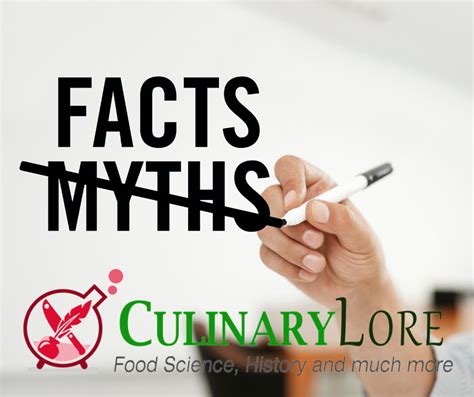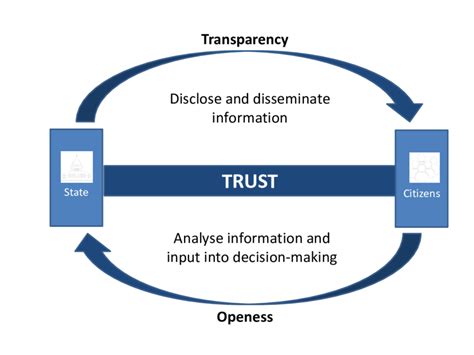
Debunked cooking myths are reshaping culinary practices as widely accepted kitchen “truths” are challenged by experienced cooks and online communities, revealing misconceptions about food preparation.
Many home cooks operate under the assumption that certain cooking practices are sacrosanct, but a wave of shared experiences and debunking efforts is proving many of these beliefs to be unfounded. Internet users, including seasoned chefs and enthusiastic amateurs, are challenging long-held culinary myths and sharing their findings online. These debunked myths range from proper pasta cooking methods to the necessity of searing meat to seal in juices, and even extend to food storage techniques.
Common Myths Busted
The debunking movement, amplified by social media and online forums, has uncovered several myths that have long influenced cooking behaviors. One of the most pervasive myths involves pasta preparation. It’s commonly believed that adding oil to pasta water prevents sticking. However, experienced cooks reveal this is ineffective. “Adding oil to the water doesn’t actually prevent the pasta from sticking together,” one contributor noted. The oil simply floats on the surface and doesn’t integrate with the pasta.
Another significant myth centers around searing meat. The conventional wisdom suggests that searing meat seals in its juices, resulting in a more succulent final product. However, this has been challenged by culinary experts. Searing meat primarily contributes to flavor and texture development through the Maillard reaction, a chemical reaction between amino acids and reducing sugars that gives browned food its distinctive flavor. While searing does create a flavorful crust, it doesn’t completely prevent moisture loss.
Food storage practices also are under scrutiny. One widely held belief is that refrigerating tomatoes diminishes their flavor. While cold temperatures can affect texture, many now believe the flavor impact is less significant than previously thought, and proper storage can still preserve the overall quality of the tomato. Similarly, storing onions and potatoes together has long been discouraged due to the belief that onions cause potatoes to sprout. However, some argue the effect is negligible if both are stored in a cool, dark, and dry place with sufficient ventilation.
Expert Opinions and Scientific Insights
Culinary experts have weighed in, offering scientific explanations and practical advice to support the debunking of these myths. For instance, Harold McGee, a food science writer and author of “On Food and Cooking: The Science and Lore of the Kitchen,” has consistently emphasized the importance of understanding the science behind cooking techniques. He explains that searing meat primarily enhances flavor through browning reactions, and moisture loss is inevitable regardless of the searing process.
Similarly, food scientists have explored the effects of cold temperatures on tomatoes. Studies indicate that chilling tomatoes can slow down the ripening process and reduce the production of volatile compounds responsible for flavor. However, these effects can be minimized by allowing the tomatoes to return to room temperature before consumption.
Impact on Cooking Practices
The debunking of these myths is influencing cooking practices in several ways. Home cooks are becoming more experimental, questioning traditional methods, and embracing new techniques based on scientific understanding. This shift is encouraging a more informed approach to cooking, where decisions are based on evidence rather than blind adherence to outdated beliefs.
Moreover, the online sharing of debunked myths is fostering a sense of community among cooks. Online forums and social media platforms serve as spaces for individuals to exchange experiences, share tips, and challenge conventional wisdom. This collaborative environment is democratizing culinary knowledge and empowering home cooks to refine their skills.
The willingness to question established cooking practices is a positive development in the culinary world. It encourages a more nuanced understanding of food preparation and promotes innovation in the kitchen.
Examining the Myths in Detail
Let’s delve into each of these common cooking myths, exploring the science and reasoning behind their debunking.
-
Myth: Adding Oil to Pasta Water Prevents Sticking
This is one of the most enduring myths in pasta preparation. The idea is that a slick of oil on the surface of the water will coat the pasta, preventing it from clumping together as it cooks. However, as previously noted, oil and water are immiscible, meaning they don’t mix. The oil floats on top and doesn’t effectively coat the pasta.
- Why it doesn’t work: Oil is hydrophobic, meaning it repels water. As the pasta cooks, it releases starch into the water, which is what causes it to stick. The oil on the surface of the water doesn’t interact with this starch.
- Better alternatives: The best way to prevent pasta from sticking is to use plenty of water – at least six quarts for a pound of pasta – and stir it frequently during the first few minutes of cooking. This helps to dilute the starch concentration and keep the pasta moving. Also, ensuring the water is at a rolling boil when the pasta is added is crucial.
- The Real Function of Salt: Adding salt to pasta water serves a crucial purpose: seasoning the pasta itself. As the pasta cooks, it absorbs some of the salty water, enhancing its flavor from the inside out.
-
Myth: Searing Meat Seals in Juices
This myth suggests that browning the surface of meat creates an impenetrable barrier that prevents moisture from escaping during cooking. While searing is a vital step in developing flavor and texture, it does not seal in juices.
- Why it’s false: Meat is composed of muscle fibers, which contract and release moisture when heated. Searing, while creating a flavorful crust, doesn’t stop this process. In fact, the high heat involved in searing can actually cause more moisture to be expelled from the surface of the meat.
- The Maillard Reaction: The primary benefit of searing is the Maillard reaction. This chemical reaction occurs between amino acids and reducing sugars at high temperatures, resulting in hundreds of different flavor compounds that contribute to the complex taste of browned meat.
- Best Practices for Juicy Meat: To ensure juicy meat, focus on cooking it to the correct internal temperature. Using a meat thermometer is essential for accuracy. Overcooking is the main culprit behind dry, tough meat. Resting the meat after cooking is also crucial. Allowing the meat to rest for 10-15 minutes before slicing allows the juices to redistribute throughout the muscle fibers, resulting in a more tender and flavorful product.
-
Myth: Refrigerating Tomatoes Ruins Their Flavor
The common belief is that refrigerating tomatoes diminishes their flavor, making them bland and mealy. While it’s true that cold temperatures can affect the texture of tomatoes, the flavor impact is more nuanced than often portrayed.
- The Science Behind the Myth: Tomatoes are sensitive to cold temperatures. Chilling them below 55°F (13°C) can disrupt the enzymes responsible for producing volatile compounds, which contribute to their flavor. This can also lead to cell damage, resulting in a mealy texture.
- Modern Varieties and Storage: Modern tomato varieties are often bred for longer shelf life and resilience to cold storage. These varieties may be less susceptible to flavor degradation in the refrigerator.
- Proper Storage Techniques: If you must refrigerate tomatoes, store them in the crisper drawer to minimize exposure to cold air. Before serving, allow the tomatoes to return to room temperature to help restore some of their flavor and texture. Alternatively, consider using chilled tomatoes in cooked dishes where texture is less critical.
-
Myth: Storing Onions and Potatoes Together Makes Potatoes Sprout
This myth suggests that storing onions and potatoes together causes the potatoes to sprout prematurely due to gases released by the onions. While it’s true that onions release ethylene gas, which can promote ripening and sprouting in some fruits and vegetables, the effect on potatoes is often overstated.
- The Role of Ethylene Gas: Ethylene gas is a natural plant hormone that plays a role in ripening, senescence (aging), and sprouting. Some fruits and vegetables are highly sensitive to ethylene gas, while others are less so.
- Storage Conditions Matter: The most important factors in preventing potatoes from sprouting are cool, dark, and dry storage conditions. Potatoes should be stored in a well-ventilated area, away from direct sunlight and heat.
- Separate Storage is Ideal, but Not Always Necessary: While it’s ideal to store onions and potatoes separately, it’s not always necessary, especially if both are stored properly. If you’re concerned about premature sprouting, you can try storing them in separate bins or containers within the same cool, dark, and dry space.
-
Myth: You Need to Salt Eggplant to Remove Bitterness
This myth dictates that salting eggplant draws out bitter compounds, making it more palatable. While salting eggplant can indeed reduce bitterness, the need for this step depends on the variety and age of the eggplant.
- The Science of Bitterness: Some eggplants contain compounds called glycoalkaloids, which can impart a bitter taste. Salting eggplant draws out moisture through osmosis, which can also draw out some of these bitter compounds.
- Modern Varieties: Many modern eggplant varieties have been bred to be less bitter, reducing or eliminating the need for salting.
- Testing for Bitterness: Before salting, taste a small piece of raw eggplant. If it tastes bitter, salting may be beneficial. If not, you can skip this step.
- Salting Technique: If salting, slice the eggplant and sprinkle it with salt. Let it sit for 30-60 minutes, then rinse and pat it dry before cooking. This will help remove excess moisture and any bitter compounds.
The Rise of Culinary Skepticism
The debunking of cooking myths reflects a broader trend of culinary skepticism and a growing interest in the science of cooking. As access to information increases, home cooks are becoming more discerning and are seeking evidence-based answers to their culinary questions.
This trend is fueled by several factors:
- The Internet and Social Media: Online platforms provide a space for cooks to share experiences, challenge conventional wisdom, and access information from culinary experts and food scientists.
- Celebrity Chefs and Cooking Shows: Chefs like Alton Brown, known for his emphasis on the science of cooking, have popularized a more analytical approach to food preparation.
- Food Science Education: Increased awareness of food science principles is empowering home cooks to understand the underlying mechanisms behind cooking techniques.
The Future of Cooking
The debunking of cooking myths is likely to continue as more research is conducted and more cooks embrace a scientific approach to food preparation. This trend will lead to more efficient and effective cooking techniques, as well as a deeper appreciation for the art and science of cooking.
Here’s a look at the potential impact of this culinary revolution:
- More Informed Cooks: Home cooks will be better equipped to make informed decisions about cooking techniques based on scientific evidence rather than outdated beliefs.
- Innovation in the Kitchen: A willingness to question conventional wisdom will lead to more experimentation and innovation in the kitchen.
- Better Tasting Food: By understanding the underlying principles of cooking, cooks will be able to produce better-tasting and more nutritious food.
- Reduced Food Waste: By debunking myths about food storage, cooks will be able to store food more effectively, reducing waste and saving money.
- A More Collaborative Culinary Community: Online platforms will continue to foster a sense of community among cooks, facilitating the exchange of knowledge and experiences.
The Importance of Critical Thinking
The debunking of cooking myths highlights the importance of critical thinking in all aspects of life. By questioning assumptions and seeking evidence-based answers, we can make more informed decisions and improve our understanding of the world around us.
In the context of cooking, critical thinking involves:
- Questioning Traditional Methods: Don’t blindly follow recipes or cooking instructions without understanding the reasons behind them.
- Seeking Evidence: Look for scientific explanations and empirical data to support or refute cooking claims.
- Experimenting and Observing: Try different techniques and observe the results.
- Sharing Experiences: Share your findings with others and learn from their experiences.
- Staying Open-Minded: Be willing to change your beliefs in light of new evidence.
Debunking Myths: A Continuous Process
It’s important to recognize that the debunking of cooking myths is an ongoing process. New research and discoveries are constantly challenging our understanding of food preparation. As such, it’s essential to remain open-minded and continue to question assumptions as new information becomes available. The journey to culinary mastery is one of continuous learning and refinement.
Frequently Asked Questions (FAQ)
-
Does adding oil to pasta water really prevent it from sticking?
No, adding oil to pasta water is not an effective way to prevent sticking. The oil floats on top of the water and doesn’t mix with the pasta. The best way to prevent pasta from sticking is to use plenty of water (at least six quarts for a pound of pasta), stir it frequently during the first few minutes of cooking, and ensure the water is at a rolling boil when the pasta is added.
-
Does searing meat seal in the juices?
No, searing meat does not seal in the juices. While searing creates a flavorful crust through the Maillard reaction, it doesn’t prevent moisture from escaping during cooking. To ensure juicy meat, focus on cooking it to the correct internal temperature and resting it after cooking to allow the juices to redistribute.
-
Is it true that refrigerating tomatoes ruins their flavor?
Refrigerating tomatoes can affect their texture and potentially reduce the production of volatile compounds responsible for flavor, especially at very low temperatures. However, modern tomato varieties are often bred to be more resilient, and the impact can be minimized by storing them in the crisper drawer and allowing them to return to room temperature before serving.
-
Does storing onions and potatoes together really cause potatoes to sprout?
While onions release ethylene gas, which can promote sprouting in some fruits and vegetables, the effect on potatoes is often overstated. The most important factors in preventing potatoes from sprouting are cool, dark, and dry storage conditions with adequate ventilation. Separating them is ideal, but not always critical if storage conditions are optimized.
-
Is it always necessary to salt eggplant to remove bitterness?
No, it’s not always necessary to salt eggplant. Many modern varieties have been bred to be less bitter. Taste a small piece of raw eggplant first; if it tastes bitter, salting may be beneficial. If not, you can skip this step. If salting, slice the eggplant, sprinkle it with salt, let it sit for 30-60 minutes, then rinse and pat it dry before cooking.
Conclusion
The ongoing debunking of cooking myths is transforming the culinary landscape, encouraging a more informed, experimental, and collaborative approach to food preparation. By questioning assumptions, embracing scientific insights, and sharing experiences online, home cooks are refining their skills and producing better-tasting, more nutritious food. As culinary skepticism continues to rise, the future of cooking promises to be one of innovation, efficiency, and a deeper appreciation for the art and science of the kitchen. The shift highlights the importance of critical thinking and continuous learning, not just in cooking, but in all aspects of life, enabling us to make more informed decisions and cultivate a deeper understanding of the world around us.









